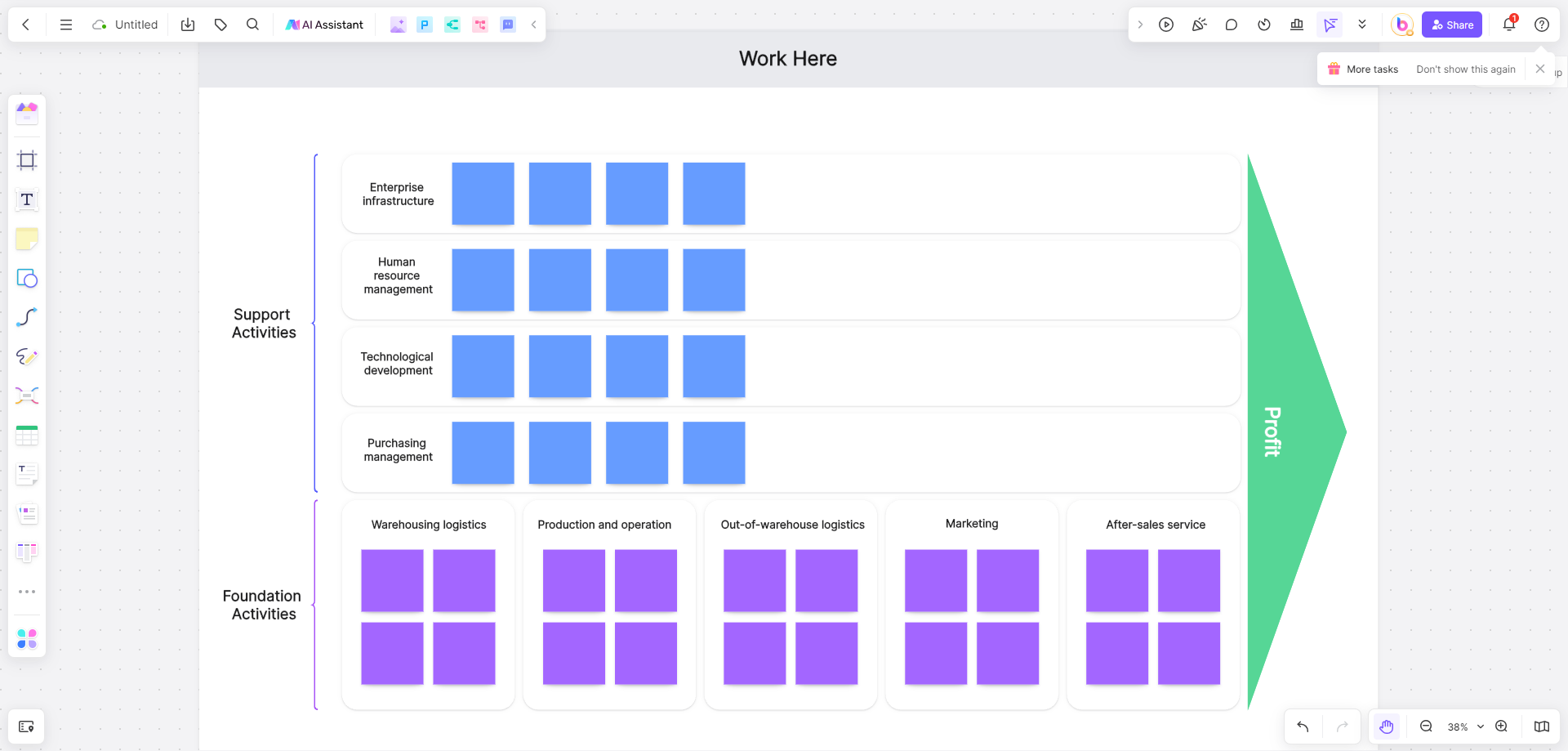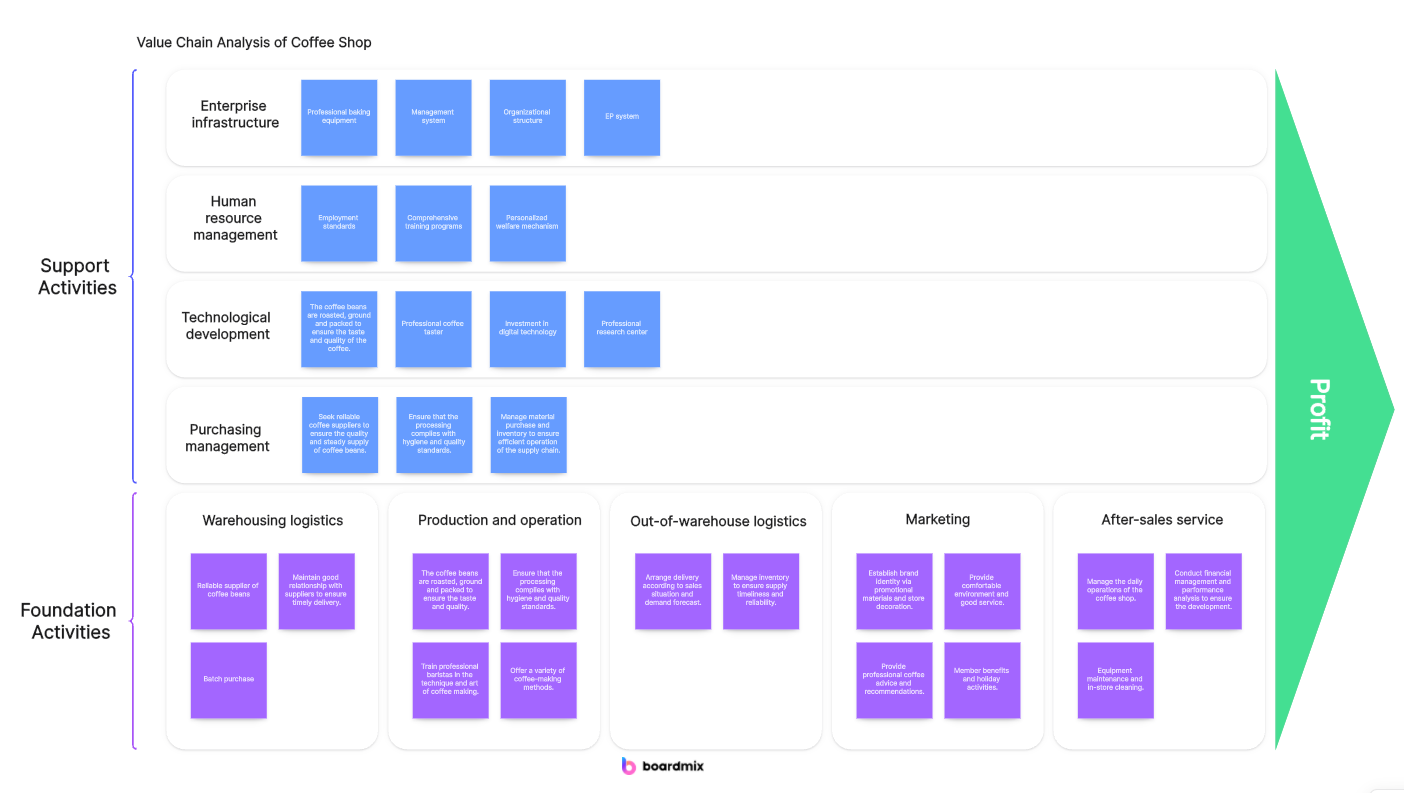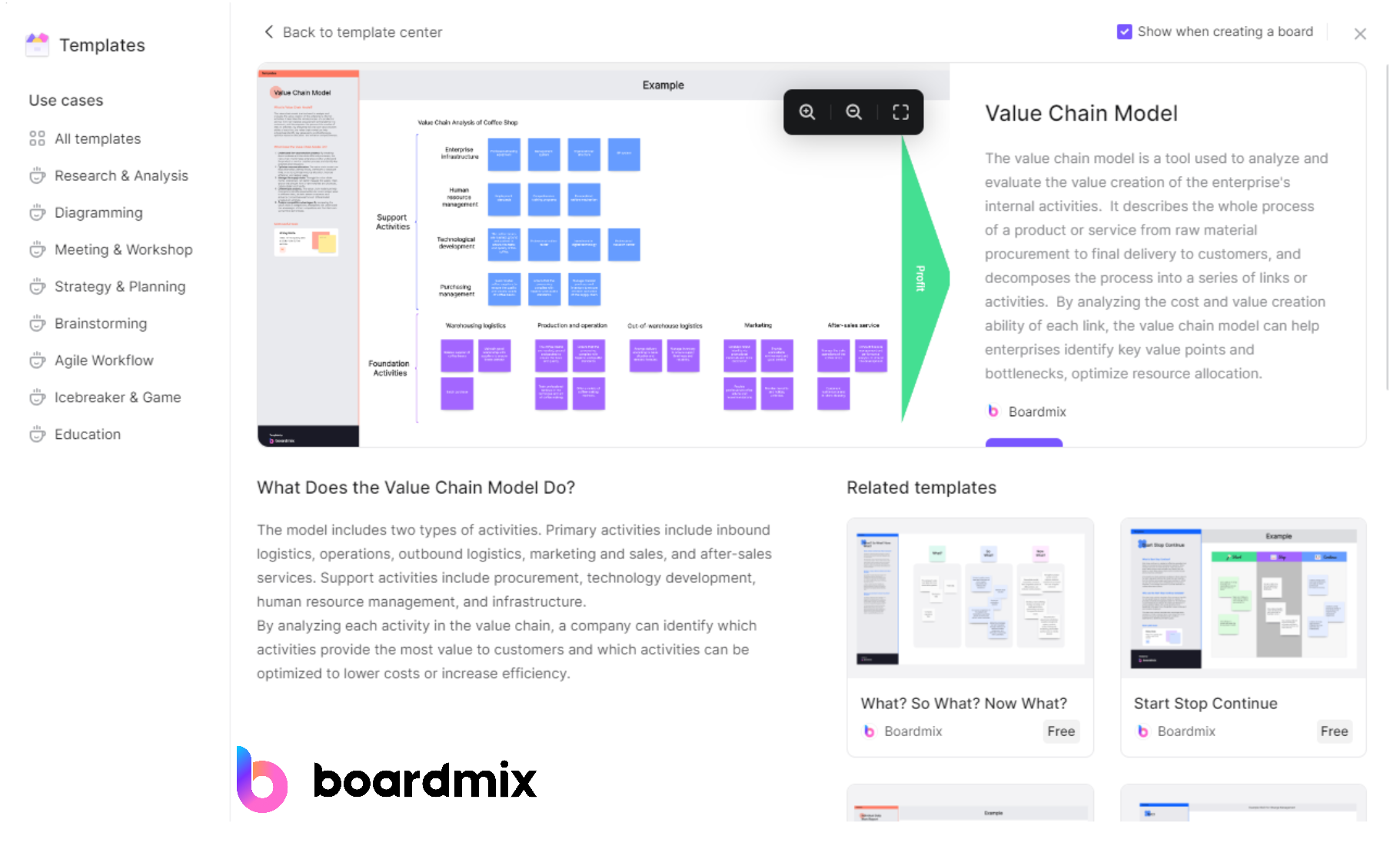In the dynamic and competitive landscape of modern business, organizations strive not only to create products and services but also to deliver superior value to customers. Value Chain Analysis is a strategic framework that enables businesses to dissect and understand the various activities involved in creating, producing, and delivering a product or service. Developed by Michael Porter in the 1980s, this concept has since become a cornerstone in strategic management, helping companies identify opportunities for efficiency, differentiation, and competitive advantage.
Part 1. What is Value Chain?
The value chain is a concept introduced by Michael Porter in his 1985 book "Competitive Advantage: Creating and Sustaining Superior Performance." It is a strategic framework that helps analyze and understand the various activities a business performs to create and deliver a product or service to customers. The value chain encompasses the entire process, from the acquisition of raw materials to the delivery of the final product to end-users.

Part 2. What is Value Chain Analysis?
Value Chain Analysis is a systematic approach to understanding the sequence of activities within a business and how they contribute to the overall value delivered to the customer. The term "value chain" refers to the entire process, from the initial stages of procuring raw materials to the final delivery of the product or service to the end-user.
Part 3. Key Components of Value Chain Analysis
The components represent the sequential and interconnected stages of creating, producing, and delivering a product or service, allowing businesses to analyze and optimize their overall value chain. They include:
1. Primary Activities
Inbound Logistics: Involves the receiving, warehousing, and inventory management of raw materials.
Operations: Includes the processes of transforming inputs into the final product or service.
Outbound Logistics: Encompasses the activities required to deliver the product or service to the customer.
Marketing and Sales: Focuses on promoting and selling the product or service to potential customers.
Service: Involves post-sale activities such as customer support, maintenance, and warranty services.
2. Support Activities
Procurement: The process of sourcing raw materials, goods, and services.
Technology Development: Involves research and development, as well as technology infrastructure to support the entire value chain.
Human Resource Management: Encompasses activities related to the recruitment, training, and management of personnel.
Infrastructure: Includes activities such as legal, finance, and other organizational support functions.
Part 4. What is the Purpose of Value Chain Analysis
The purpose of Value Chain Analysis is to help businesses understand the sequence of activities involved in the creation, production, and delivery of a product or service. By breaking down the value chain into its constituent parts, organizations can gain insights into the sources of competitive advantage, efficiency improvements, and opportunities for differentiation. Here are the primary purposes of Value Chain Analysis:
Identify Cost Drivers:
- Understand the cost structure of the business.
- Identify specific activities that contribute significantly to overall costs.
- Pinpoint areas for cost reduction or efficiency improvement.
Enhance Differentiation:
- Identify the activities that contribute to product or service differentiation.
- Highlight unique aspects of the value chain that can be leveraged for a competitive advantage.
- Enhance the overall value proposition to customers.
Optimize Operations:
- Evaluate the efficiency of each value chain activity.
- Identify bottlenecks or areas where processes can be streamlined.
- Optimize the sequence of activities for improved overall performance.
Strategic Decision-Making:
- Inform strategic decisions by providing a comprehensive understanding of the business's internal processes.
- Assist in aligning the value chain with the overall business strategy.
- Support decision-making related to outsourcing, technology investments, and market positioning.
Competitive Advantage:
- Identify opportunities for creating a sustainable competitive advantage.
- Benchmark the performance of each value chain activity against industry standards and competitors.
- Formulate strategies to outperform competitors in key areas.
Customer Focus:
- Understand how each activity contributes to meeting customer needs and expectations.
- Identify opportunities to enhance customer satisfaction throughout the value chain.
- Align value chain activities with customer preferences and market trends.
Continuous Improvement:
- Provide a basis for continuous monitoring and improvement of business processes.
- Enable businesses to adapt to changes in the market, technology, and customer demands.
- Facilitate a culture of continuous improvement within the organization.
In summary, Value Chain Analysis serves as a powerful tool for strategic management, enabling businesses to gain a holistic view of their operations, optimize their processes, and create sustained value for customers and stakeholders.
Part 5. What Are the Five Steps of Value Chain Analysis?
Value Chain Analysis involves a systematic process to understand the activities within and around a business, identifying opportunities for efficiency, cost reduction, and differentiation. Here are the five steps of Value Chain Analysis:
1. Identify and Map Activities:
- Begin by listing and mapping all the activities involved in the creation, production, and delivery of your product or service.
- Categorize these activities into primary activities (directly related to production and delivery) and support activities (indirect but essential for overall operations).

2. Conduct Cost Analysis:
- Examine the costs associated with each activity in the value chain.
- Identify cost drivers and understand how costs are distributed across the various stages.
- Pinpoint areas where costs can be reduced, eliminated, or better managed.

3. Conduct Differentiation Analysis:
- Evaluate how each activity contributes to product or service differentiation.
- Identify unique aspects that set your product or service apart from competitors.
- Consider ways to enhance or highlight these differentiators to create a competitive advantage.

4. Conduct Benchmarking:
- Compare the performance of your activities with industry benchmarks or competitors.
- Identify areas where your business excels and areas that may need improvement.
- Benchmarking helps in setting performance standards and goals.
5. Develop and Implement Strategies:
- Based on the insights gained from the analysis, develop strategies for improvement.
- Streamline processes, invest in technology, or revise marketing strategies as needed.
- Ensure that the strategies align with the overall goals and competitive positioning of the business.

It's important to note that Value Chain Analysis is not a one-time process. Businesses should continuously reassess and adapt their value chain to changes in the market, technology, and customer preferences. Regularly monitoring and updating the analysis allows for ongoing optimization and strategic decision-making.
Part 6. What Are the Benefits of a Value Chain Analysis
Value Chain Analysis offers several benefits to businesses seeking to understand and improve their operations. Here are some key advantages:
Cost Efficiency:
- Identifies cost drivers.
- Pinpoints areas for cost reduction.
Competitive Advantage:
- Highlights differentiation opportunities.
- Enhances the value proposition.
Strategic Decision-Making:
- Informs decisions with a comprehensive view.
- Aligns the value chain with overall strategy.
Operational Optimization:
- Improves efficiency through bottleneck identification.
- Streamlines processes for better performance.
Customer Satisfaction:
- Understands and meets customer needs.
- Enhances overall customer experience.
Continuous Improvement:
- Establishes a basis for continuous monitoring.
- Enables adaptability to market changes.
Resource Allocation:
- Informs resource allocation decisions.
- Guides technology investments and outsourcing.
Risk Mitigation:
- Identifies and mitigates potential risks.
- Facilitates contingency planning.
Supplier and Partner Relationships:
- Optimizes procurement processes.
- Strengthens relationships with suppliers and partners.
Benchmarking:
- Compares performance against industry standards.
- Sets performance excellence standards and goals.
In summary, Value Chain Analysis empowers businesses to enhance efficiency, create differentiation, and sustain a competitive advantage through a systematic examination of their operations.
Part 7. Best Value Chain Analysis Tool – Boardmix
Boardmix is a cutting-edge online whiteboard solution designed to revolutionize the way you conduct value chain analysis. Our platform offers an extensive range of drawing templates that simplify the process of mapping out your organization's activities, from inbound logistics to operations, and marketing to service. With Boardmix, you can easily visualize each step in your value chain, identify areas for improvement, and strategize ways to increase efficiency and profitability. Although we are currently not integrated with other ecosystems, our robust standalone features provide all the tools you need for comprehensive value chain analysis.

Key features of Boardmix:
- Extensive Range of Drawing Templates: Boardmix provides a variety of pre-designed templates that can be used to map out each step in your value chain, from procurement to production, distribution, and after-sales services.
- Real-Time Collaboration: With Boardmix, team members can collaborate in real-time, making it easier to brainstorm ideas, discuss strategies and make decisions quickly.
- Interactive Whiteboard: Our interactive whiteboard allows you to visualize your entire value chain on one screen. You can easily add notes, draw diagrams, and move elements around as your analysis evolves.
- Easy-to-Use Interface: Boardmix's user-friendly interface ensures that even those with little technical knowledge can effectively use the platform for value chain analysis.
- Secure Data Protection: We prioritize your data's security. All information shared on our platform is encrypted and securely stored.
- Scalability: Whether you're a small business or a large corporation, Boardmix scales to meet your needs. It supports multiple users without compromising performance or speed.
Conclusion
Value Chain Analysis is a powerful tool for organizations seeking to understand their competitive position and optimize their operations. By systematically examining each activity's contribution to value creation, businesses can make informed strategic decisions, enhance their competitive advantage, and ultimately deliver greater value to customers. As markets continue to evolve, the ability to adapt and optimize the value chain will be crucial for sustained success in today's business environment.
Boardmix is your ultimate solution for value chain analysis, offering an extensive range of drawing templates that simplify the process of mapping out your organization's activities. Start with the free trial now!







